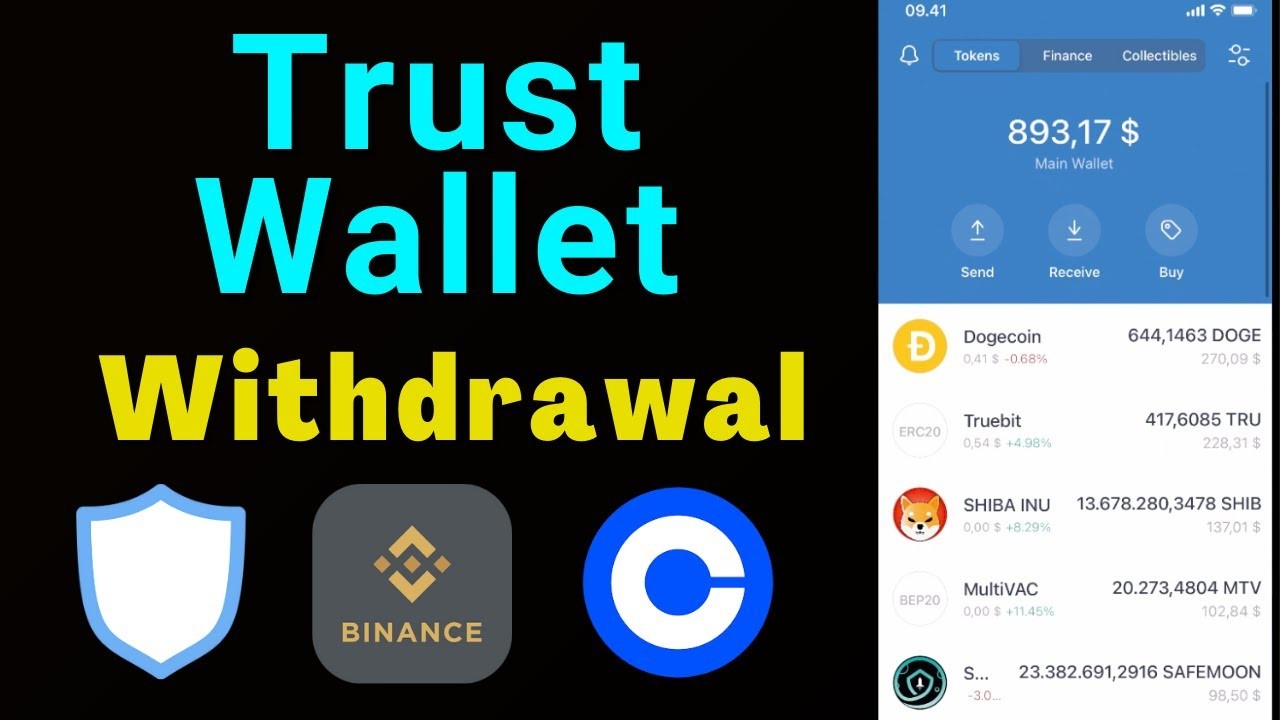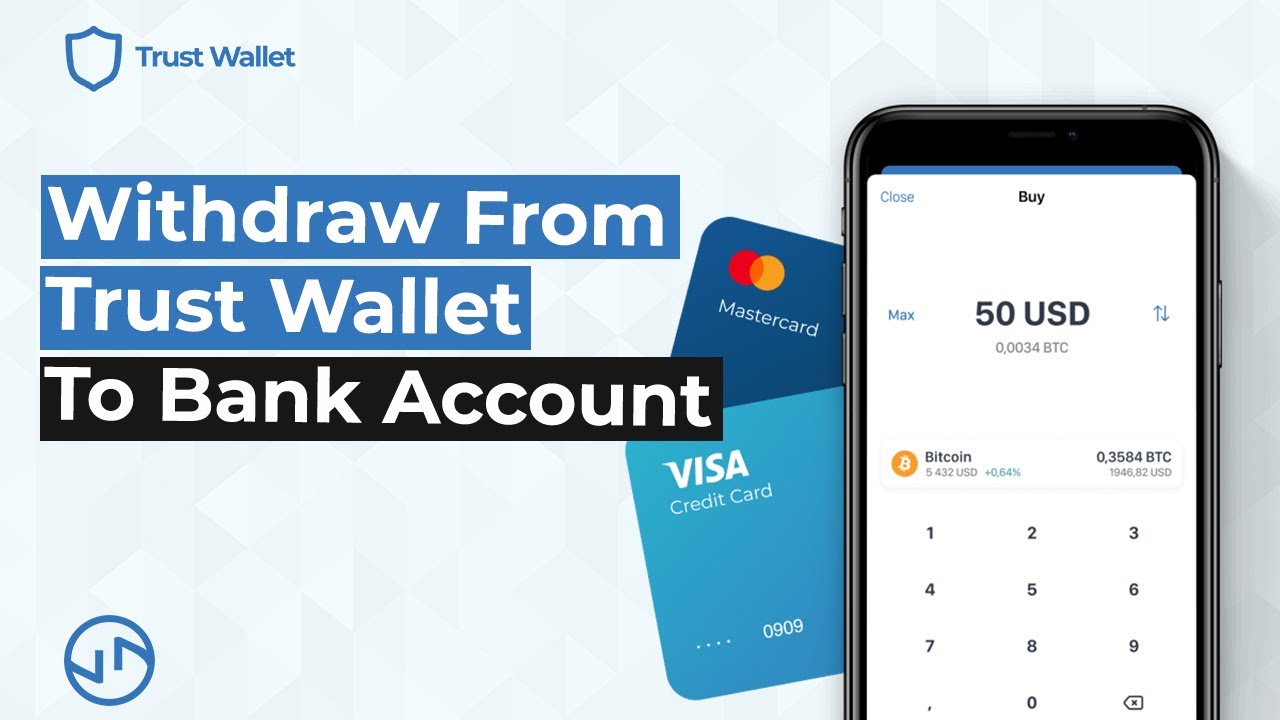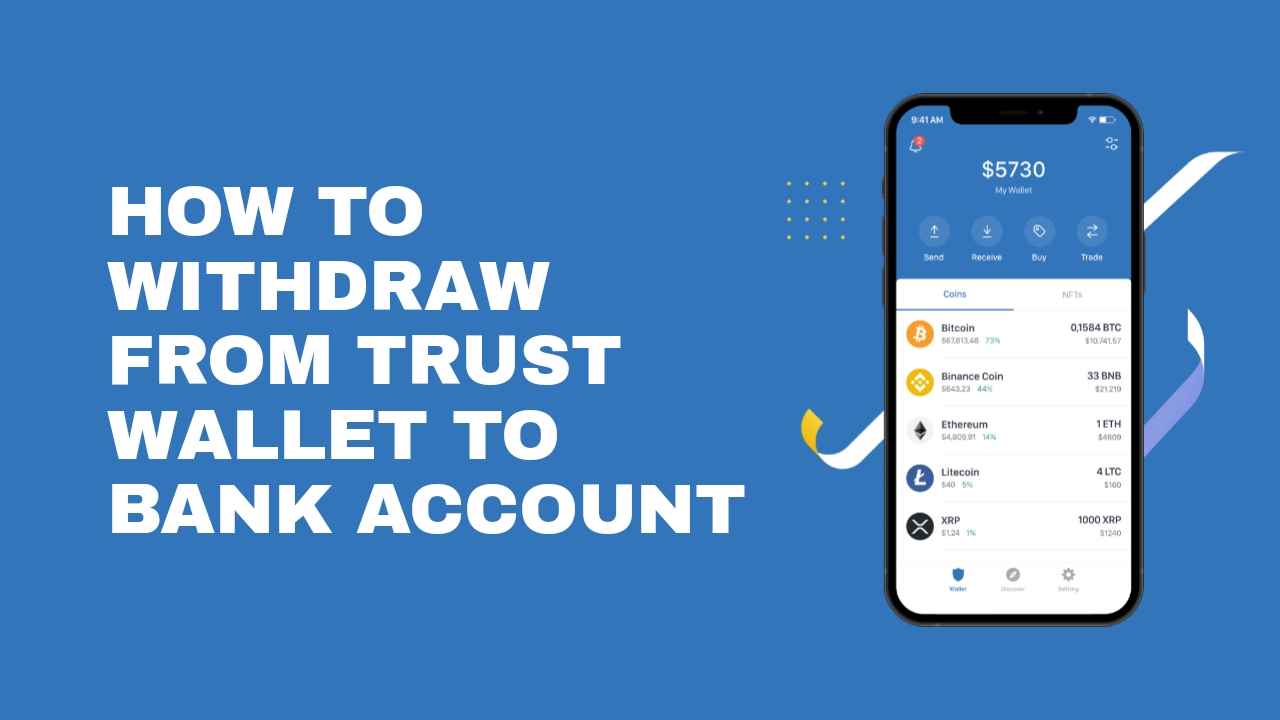Yes, you can get money from Trust Wallet by converting your cryptocurrencies to fiat currency through a third-party exchange and then transferring the fiat to your bank account. This involves selling your digital assets for fiat currency on an exchange platform and then withdrawing that money to your bank.

Exploring Withdrawal Options in Trust Wallet
Trust Wallet provides users with various options to manage their cryptocurrencies effectively. One of the key aspects of using digital wallets is understanding how to withdraw funds, whether converting cryptocurrency to fiat currency or transferring assets to a bank account. This section delves into the steps and best practices for withdrawing from Trust Wallet, along with an overview of network fees and withdrawal limits that users should be aware of.
Withdrawing to Bank Accounts: A Step-by-Step Guide
Withdrawing funds from Trust Wallet to a bank account involves a few steps, typically requiring the conversion of cryptocurrency to fiat currency first. Here’s a general guide:
- Select the Cryptocurrency to Convert: Open Trust Wallet, navigate to the cryptocurrency you wish to convert and withdraw.
- Convert Cryptocurrency to Fiat: Use a third-party exchange or service integrated within Trust Wallet to convert your selected cryptocurrency to fiat currency, such as USD, EUR, or your local currency.
- Transfer to Your Bank Account: Once converted, you can transfer the fiat currency to your bank account. This step might require setting up a withdrawal through the exchange or service used for conversion, where you’ll provide your bank account details.
Converting Cryptocurrencies to Fiat: Best Practices
To ensure a smooth conversion process from cryptocurrencies to fiat, consider the following best practices:
- Use Reputable Exchanges: Choose well-established and trustworthy exchanges or platforms for converting your cryptocurrencies.
- Be Aware of Conversion Rates: Cryptocurrency markets can be volatile. Keep an eye on conversion rates and fees to get the best deal.
- Verify Account and Bank Details: Double-check your account and bank details before initiating a transfer to avoid any errors or delays.
Understanding Network Fees and Withdrawal Limits
When withdrawing or converting cryptocurrencies, it’s essential to be mindful of the network fees and withdrawal limits:
- Network Fees: These fees are required for processing transactions on the blockchain. They vary depending on the cryptocurrency, the network’s current congestion, and the transaction’s urgency.
- Withdrawal Limits: Some exchanges and services impose limits on the amount you can withdraw within a certain timeframe. These limits may vary based on your verification level with the service.
Maximizing Earnings Through Trust Wallet
Trust Wallet not only serves as a secure platform for managing cryptocurrencies but also offers various opportunities for users to maximize their earnings. By engaging in staking, participating in decentralized finance (DeFi) projects, and taking advantage of airdrops and rewards programs, users can generate passive income or increase their cryptocurrency holdings. Below are the strategies for enhancing earnings through Trust Wallet.
Staking Cryptocurrencies for Passive Income
Staking involves holding funds in a cryptocurrency wallet to support the operations of a blockchain network. It’s an excellent way to earn passive income through Trust Wallet by participating in the network consensus as a validator:
- Choose a Stakable Cryptocurrency: Trust Wallet supports staking for several cryptocurrencies. Users should research and select a currency that offers a good balance of returns and network stability.
- Understand the Staking Process: Each cryptocurrency has its staking mechanism. Familiarize yourself with the staking process, minimum staking requirements, and unlocking periods.
- Start Staking: Within Trust Wallet, navigate to the staking section, choose the cryptocurrency, and follow the instructions to stake your assets. You’ll earn rewards based on the amount staked and the staking duration.
Participating in DeFi Projects via Trust Wallet
Trust Wallet’s integration with various DeFi platforms allows users to participate in the DeFi ecosystem directly from their wallet. This includes lending, borrowing, yield farming, and liquidity mining:
- Explore DeFi Platforms: Use Trust Wallet’s built-in Web3 browser to explore and interact with DeFi platforms.
- Evaluate Opportunities: Look for DeFi projects with strong fundamentals, liquidity, and security measures. Consider the potential returns and risks involved in lending, yield farming, or providing liquidity.
- Participate in DeFi: Once you’ve identified a DeFi project, follow the platform’s procedure to lend, borrow, or invest your digital assets. Monitor your investments and adjust your strategies as needed.
Exploring Airdrops and Rewards Programs
Airdrops and rewards programs are another way to earn additional tokens or coins through Trust Wallet:
- Stay Informed: Follow Trust Wallet’s official channels and communities to stay updated on upcoming airdrops and rewards programs.
- Participate in Airdrops: Airdrops usually require holding a specific cryptocurrency or performing certain tasks. Ensure your Trust Wallet is eligible to receive airdrops by meeting the necessary conditions.
- Engage in Rewards Programs: Trust Wallet and other platforms may offer rewards for participation in surveys, beta testing, or referrals. Take advantage of these programs to earn more tokens.
Ensuring Security While Transacting on Trust Wallet
In the evolving landscape of digital currencies, maintaining the security of your cryptocurrency transactions is paramount. Trust Wallet provides a secure platform for managing digital assets, but users must proactively employ advanced security measures, remain vigilant against common scams, and understand the importance of backup and recovery procedures. Here’s how to ensure your transactions on Trust Wallet are secure.
Implementing Advanced Security Features
Trust Wallet offers several advanced security features to protect your assets:
- Enable Two-Factor Authentication (2FA): While Trust Wallet primarily secures your wallet with a private key stored on your device, adding an extra layer of security through 2FA can help protect against unauthorized access.
- Use Biometric Security: Fingerprint scanning and facial recognition add a convenient yet secure layer of protection to your wallet, ensuring that only you can access your digital assets.
- Stay Updated: Regularly update Trust Wallet to the latest version to benefit from improved security features and patches for any vulnerabilities.
Recognizing and Avoiding Common Scams
Being aware of common scams and employing best practices can significantly reduce the risk of falling victim to malicious actors:
- Phishing Attacks: Be cautious of emails or messages pretending to be from Trust Wallet or other trusted entities. Always verify the sender’s information and never share your private keys or recovery phrases.
- Fake Apps and Websites: Download Trust Wallet only from official app stores and ensure you’re visiting the official website. Scammers often create convincing copies to steal information.
- Social Media Scams: Be wary of offers that seem too good to be true, especially on social media platforms. Scammers frequently use these platforms to promote fraudulent schemes.

Backup and Recovery Procedures for Your Wallet
Backing up your wallet is crucial to prevent the loss of your digital assets:
- Secure Your Recovery Phrase: Trust Wallet provides a 12-word recovery phrase when you create a wallet. Write this phrase down and store it in a secure, offline location. This phrase is the only way to recover your wallet if you lose access to your device.
- Do Not Share Your Recovery Phrase: Keep your recovery phrase confidential. Sharing it with anyone, even in the guise of support, can lead to the loss of your cryptocurrencies.
- Regular Backups: Regularly back up your wallet, especially after adding new addresses or making significant changes. This practice ensures you have the latest information necessary for recovery.
By implementing advanced security features, staying vigilant against scams, and adhering to rigorous backup and recovery protocols, Trust Wallet users can significantly enhance the security of their cryptocurrency transactions and protect their valuable digital assets.
